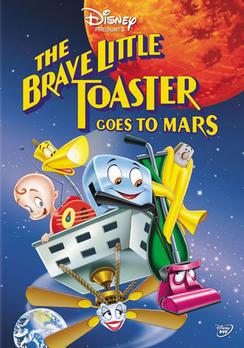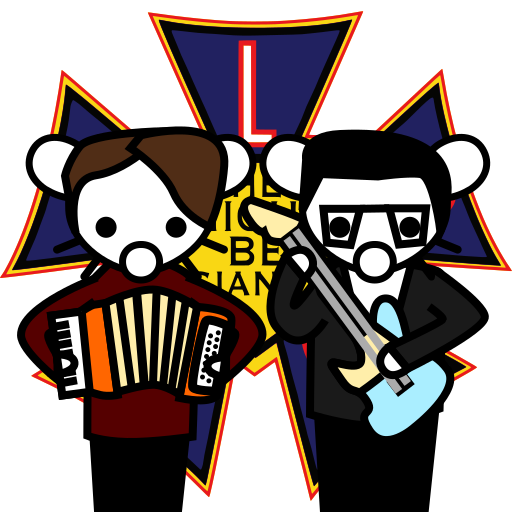I just realized another thing about April - assuming humans live 120 years on average in the Trek universe and April got turned roughly 20 in Counter/Clock, an elderly April could still be alive in the 2360s or 70s.
I never get why people use RAR anymore when tar archives are good now.
I would love that! Give the lost part of the Monster Maroon era (mid 2290s-2340s) some love.
The weird thing is April from SNW should canonically still be alive due to TAS:”Counter-clockwise Incident”.
TLDR: The Commission probably wouldn't like it, and the Federation even more so. Even so, there are practical hurtles such as genetic diversity and whether medical knowledge of symbionts is advanced enough to keep a large population healthy and happy.
For one, a fundamental tenet of the ideology of the commission is to protect the well-being of the symbionts, sentient beings, from suffering abuse due to potential competition between Trill over a limited number of symbionts.
If we take the well-being argument further, cloning symbionts has many issues to their well-being. Cloning them would be indignant because it would reduce them to a commodity that every Trill should have rather than a sentient being that chooses a relationship.
Even if the idea got through the commission, I feel like the rest of the Federation might frown on this for those reasons in addition to another: I think there's already a slight bias in Federation culture against the cloning process.
This can be seen in TNG:"Up The Long Ladder" (in addition to revealing that cloning on a large scale has negative implications, Riker is so mad about cloning he murders his own clone and Pulaski's) and TNG:"Second Chances"/LD:"Kayshon, His Eyes Open" (Transporter cloning is seen as a suboptimal circumstance). This suggest culturally, the Federation finds cloning inconvenient at best and a violation at worst. This might be partially negated if the symbionts were to give consent, but it would still feel iffy to most planets
On another note, exact cloning symbiont genomes could have drastic consequences. For one, it would vastly reduce the genetic diversity of the symbionts; this means if there was say, 1 million Daxs with all the same DNA, there's a higher chance that a virus could evolve that's really good at spreading between Daxs, allowing the virus to spread in those Daxs and evolve, probably ultimately killing a lot of symbionts.
The above might be able to be averted if say, you sequenced the DNA of all the (willing) symbionts and generated distinct genome sequences by simulated breeding between symbionts (if they sexually reproduce) or maybe simulating mutations if they reproduce asexually. You could then synthesize the genome and grow a symbiont from it.
Even this better solution might prevent problems, though - what happens when symbionts have genetic defects? With symbionts being so rare, is the medical knowledge of them enough that a large population could be kept healthy?
I feel like I had a problem very much like this with Debian Testing on my Surface Go 1 (and I think my desktop too) a couple years back, and it turned out there was issues with /etc/nsswitch.conf. I can't remember exactly what I did, but this is the current contents of that file:
# /etc/nsswitch.conf
#
# Example configuration of GNU Name Service Switch functionality.
# If you have the `glibc-doc-reference' and `info' packages installed, try:
# `info libc "Name Service Switch"' for information about this file.
passwd: files systemd
group: files systemd
shadow: files
gshadow: files
hosts: files mdns4_minimal [NOTFOUND=RETURN] dns myhostname
networks: files
protocols: db files
services: db files
ethers: db files
rpc: db files
netgroup: nis
Compare yours - maybe even post it so I can try to reproduce the issue on my machine. Anyhow, hope it helps, and good luck.
It depends. Sometimes I shut it down every night. Occasionally, I'll leave it in sleep mode for a few days.
I think the longest uptime I've had on anything I've owned is probably a month or so on a Raspberry Pi 4 server I used to have running with a personal Mediawiki instance (I still have the Pi, but if I ran a server in my dorm, I have the feeling someone might come to bite off my hand).
Have you tried SSH-ing into the system when it's in the bad state to see if you can diagnose the problem? You might be able to see if any displays are being detected at all in the problematic state. Part of me wonders, though is not certain, if the switch is somehow providing an inconsistent display name that confuses the system, though this is just a hunch - I have no idea what I'm talking about, to be frank.
Also, try switching TTYs and seeing if those show up.
Do attempts without Windows as the first step count e.g running Windows in QEMU on Wine on Linux?
Also, depending on which version of WSL you used, you might be breaking your own rule with WSL on VMs since WSL2 uses Hyper-V. You might also be breaking it again with QEMU.
What actually counts as "VM software"? Are you defining it as a hypervisor, or does, for instance, emulating Linux on ARM in an emulator of a RISC V system in an emulator of a PowerPC system break the rule. In addition, do you mean consecutive VM software steps, or could I for instance emulate an ARM CPU that supports hypervisors and run a VM software in there?
I could see it your way. My main gripe is it feels like saying the left side of my brain went to heaven while the right side stayed on earth.
I guess in some ways, this part of the debate mirrors the confusion of Worf post-Jadza and just the overall nature of afterlives in general.









That might me it - when I search older media, say The Andy Griffith show, sure enough there are a crap ton of plates.
It might be a sort of Venn diagram thing - Trek/Wars plates came at the dusk of the commemorative plate era, while the fans were more likely than others to buy collectibles like plates, making them seem unique from other fandoms.